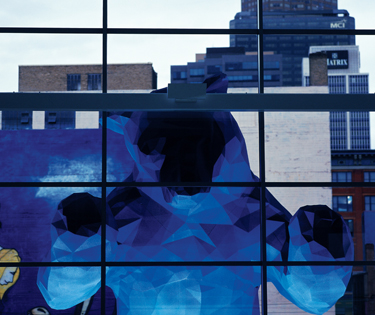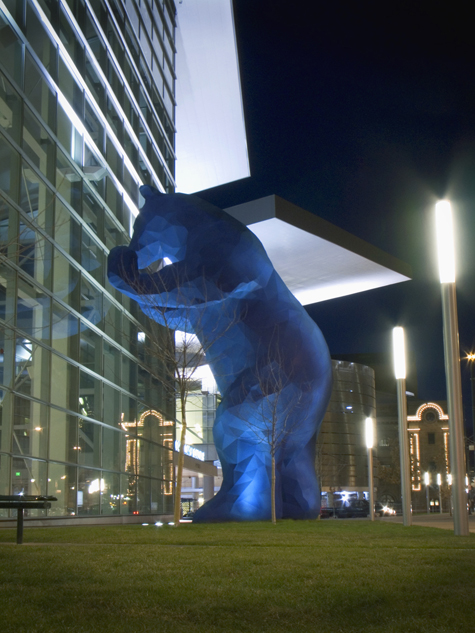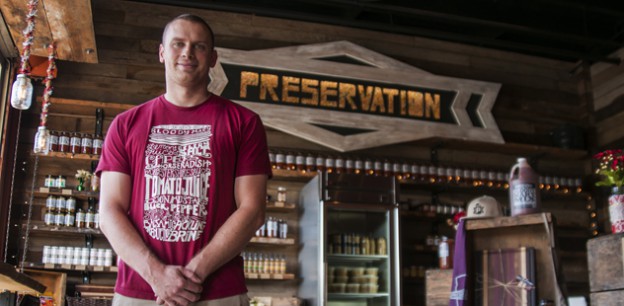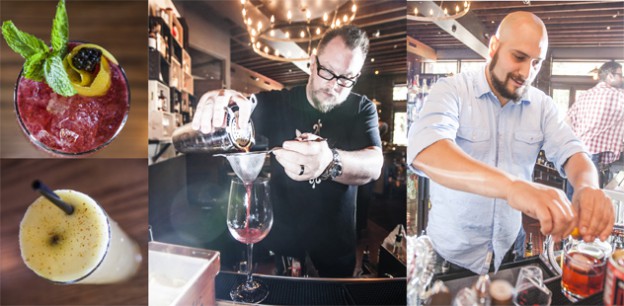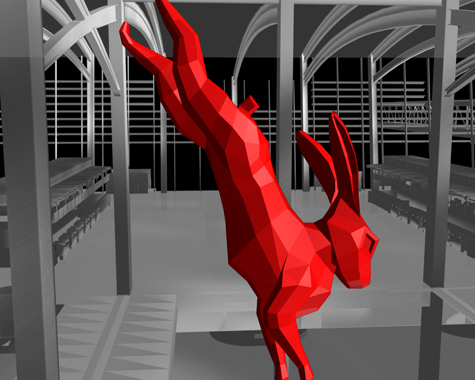Preservation & Co. Destroys the Competition with its Famous Hair of the Dog Recipe
Although its inventor and for whom it is named are disputed, the Bloody Mary has elevated from its basic tomato-juice-and-vodka origins and can be, in skilled hands, the most complex cocktail in the universe. Take, for instance, Preservation and Co.’s Bloody Mary Mix, an award-winner made right here in Sacramento, which contains the perfect balance of about 25 ingredients that provide its spicy, savory, salty and tart flavor profile.
Preservation and Co., an LLC operated by Jason Poole, is a specialty foods, small-batch production facility and retail space on 19th Street across from Safeway. It all started with his renowned Bloody Mary recipe that he served at Pour House when he worked there as general manager. Using his Bloody Mary Mix, lemon pepper vodka and Sriracha salt (with the usual assortment of pickled vegetables and lemon), he created a recipe that earned him first place in the state for the Absolut Bloody Mary Contest, then later second place at the national contest in New York.
I cruised by Poole’s retail shop and warehouse to chat him up about Preservation and Co.’s backstory, the space, his product offerings and his goals for his company. The shop is well put-together, inviting, and—hint, hint—a great spot to score unique gifts for Christmas and other occasions (also, local restaurants like Pour House, Red Rabbit, Hook & Ladder, Hock Farm and over a dozen others pour his Bloody Mary recipe using Preservation and Co. products if you want to sample the goods without having to lift a finger).
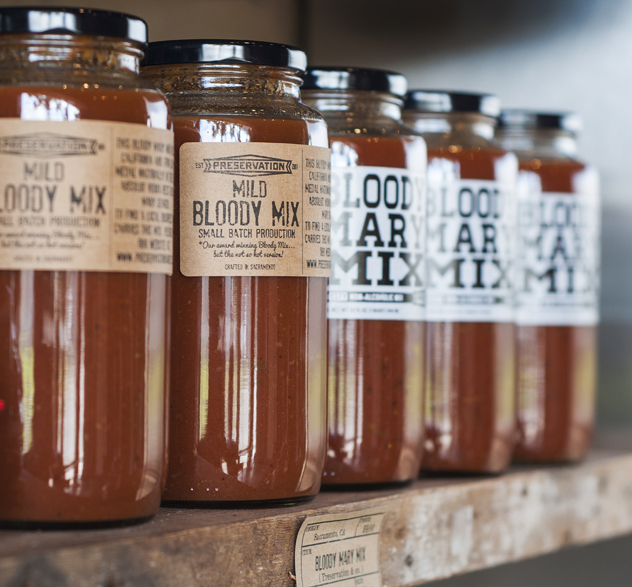
After you placed second in the nation for the Absolut Bloody Mary Contest, is that when you decided to go into business producing your Bloody Mary Mix?
Yes, that’s when we decided to start making the Bloody Mary Mix. I started out making jams and jellies in 2011, and that first company was called Bar in a Jar, because we were making jams and jellies based on cocktails. After that, I got into pickling more, just because of the space that I had—it was easy to produce pickles. I really just did farmers markets in my free time. Once the Bloody Mary came through and it was so popular, that’s when we decided to make it into a full production facility, and get our own space instead of using restaurants.
And how did you choose this space?
I was naive enough to think that I could probably run this and Pour House at the same time, which was completely and utterly false. So I saw a sign one day when I was walking to Safeway that said this space was available. I called the landlord and it was great for the retail because of the rollup door, and it also has a warehouse space in the back, and it was nice and close to Pour House. So the size seemed like it was pretty good, although now I already realize that it’s a little small—3,200 square feet got small really quickly.
How has business grown since you guys opened?
Business has been good! We took a long time to open up, about 22 months to get through all the permits and construction, so that kind of set us behind, but in that time we were still able to get distribution. Now the Bloody Mary Mix is available in just about 200 places in California, and we just started shipping out samples to new distributors in Colorado, Arizona and New Mexico, and hopefully we’re going to be in Oregon and Washington by the end of next year.
I noticed in the shop that you carry a lot of other vendors’ products, not necessarily all local…
We carry a lot of local products, and the other vendors are some small companies I found from across the nation that I really liked—small companies that go for the same values as we do of all handcrafted products. A lot of them I just heard about through social media, or they’ve had Kickstarter campaigns like I did, or they’ve been on Food Network or things like that. I wanted to make sure that we had that unique lineup that people can’t find in other stores in town.
You mentioned a commonality in values with these other companies—can you tell me about what those values are?
Basically just knowing where your ingredients come from, not just co-packing at some facility in Omaha or something and ordering by the pallet; actually making it yourself and standing behind your product instead of just shipping a recipe off… I wanted to make sure that we were part of it from beginning to end. With this retail, being able to show people the face of the company, I wanted them to be able to look back through the window at the kitchen and see where their food is being made.
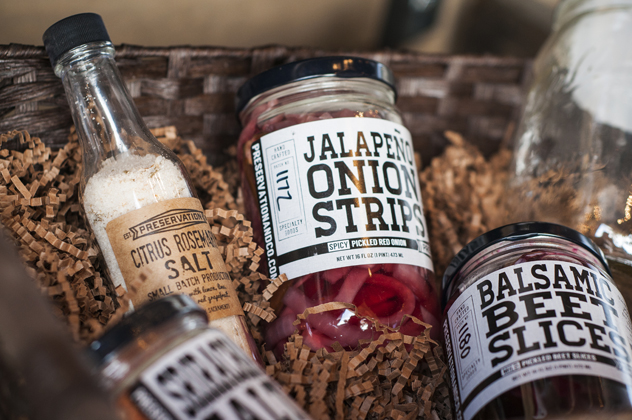
You do only small batch production on all the products here?
Yes, it’s technically all small-batch production. Obviously we have had to increase the size of the batches we make—with the Bloody Mary Mix we used to only make 55 quarts at a time, and now we do a 35 gallon batch, but certainly still small in the world of specialty foods. With produce, obviously it can be difficult to ensure consistency. We only make the pickled asparagus when it’s Delta asparagus season, because I haven’t liked the crop that comes from anywhere else. Delta asparagus is really nice and sweet. So that’s only available certain times of the year. The furthest that we like to go [for produce] is the Bay Area, but we get it as local as possible whenever it is in season.
Why is that important to you?
It’s important to keep things in our area; it’s fresher when it gets to me, and the fresher you pickle it, the better the pickles will be. And people actually care about making it, as opposed to some of the larger farms that just crop dust it all and ship it out on a truck. Specialty foods are higher priced, for a good reason. We’re making sure that we’re using good quality ingredients.
In what direction do you envision the business going?
We’re hoping to expand next year. Right now there’s just a couple of us working here, we’re hoping to fill our staff up. As long as we’re getting into what I call the Left Coast “L”, which is Oregon, Washington, California, New Mexico, Colorado, Arizona… that’s going to be a great starting point for us to build our company and get closer to national distribution. Next year we’re going to start doing classes, teach [people] how to do pickling and how to make jams and jellies; we’re going to have a Guest Chef Series to invite chefs from around town to talk about what they do best, and also we’re going to be doing events with an open-house feel where people can come in, take a look, try some stuff, and that will be a no-cost thing to have people in our community come together and talk about food.
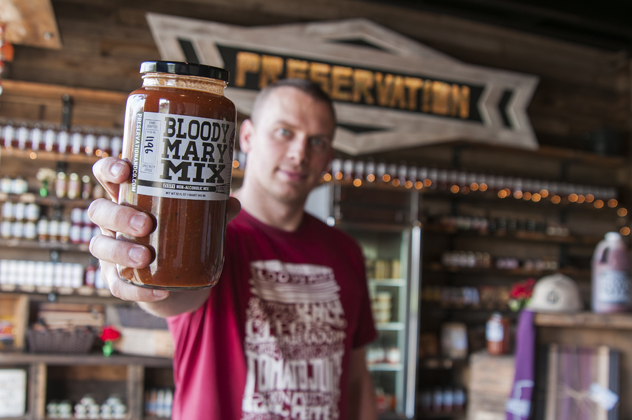
Preservation & Co. is located at 1717 19th Street in Sacramento. The shop is open on Thursday and Friday from 3 – 9 p.m., and Saturday and Sunday from 10 a.m. – 6 p.m. Visit Preservationandco.com or call 706-1044 for more info.
The Red Rabbit Kitchen & Bar is one of the driving forces behind Sacramento’s rise to craft-cocktail prominence
When Imbibe magazine listed Sacramento as one of the top 10 “places to visit in 2013” because of its surging craft-cocktail culture, it seemed as if by some divine alchemy the local drink scene finally made it onto the radar of cocktail enthusiasts on a national level.
At the crux of the movement promoting the local hand-crafted dram is The Red Rabbit Kitchen and Bar, where you’ll only find cocktails created from the ground up—homemade syrups, freshly squeezed juices and ingredients like fresh, hand-muddled herbs join the party in the glass.
“This year we’ve had a lot of national, and some international, focus on Sacramento as being a legitimate cocktail town,” says Matthew Nurge, one of the restaurant’s partners. “To be mentioned now in the same conversation as Portland, as Seattle, as New York and San Francisco is awesome.”
When longtime friends Nurge and Sonny Mayugba (chef John Bays is also a part owner) opened the doors to their hare-themed restaurant in February 2012, their vision was simple: to create a chill environment where cocktail nerds and neophytes alike could luxuriate in high-quality food and drink.
“The whole idea behind this restaurant is we wanted to do kind of a sexy upscale atmosphere, but we really wanted the attitude to be casual and easy and simple,” Nurge says. “So the whole idea between both the food program and the bar program is that we come up with simple, delicious, affordable food and beverage. We want to be a neighborhood craft bar, our motto is ‘Raising the Neighborhood Bar,’ so we wanted to have the same casual vibe of a neighborhood joint with some good stuff—good food and drink.”
A sentiment embraced by the cheerful and enthusiastic staff behind the bar.
“We work really hard to make sure that everyone who comes in here feels welcome. There’s a complete lack of pretension that’s in here,” says Christopher Sinclair, Red Rabbit bartender and president of the Sacramento Bartenders Guild. “It sort of oozes out of the walls. I mean from the way that we talk to each other to the way we talk to our customers.”
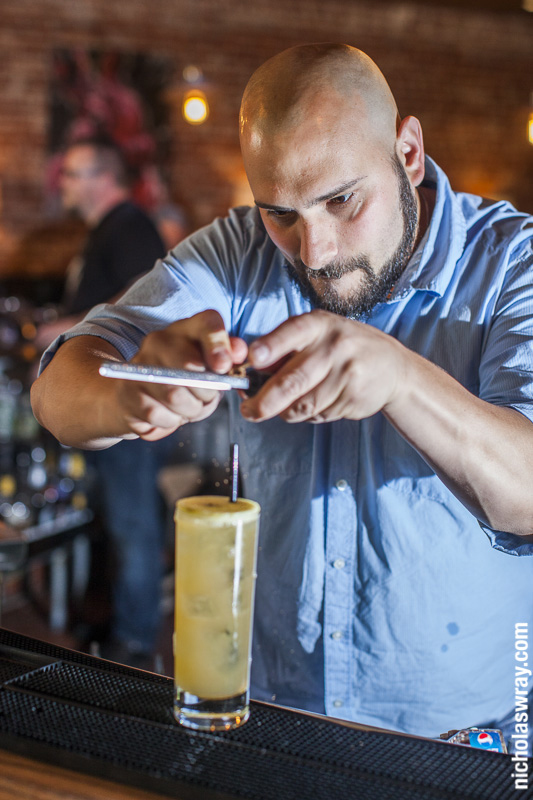
Christopher Sinclair
Much like the “farm-to-fork” movement that’s filled the bellies of local foodies, a burgeoning “farm-to-glass” campaign is starting to resonate with those looking to get their quaff on.
“People see beverages the same way they see food,” Nurge says. “They want great chefs using great products and making them great food, [and] they want great bartenders using great products to make great drinks.”
Nurge, a Sacramento native and self-professed “cocktail nerd” cut his teeth in the bar business as a youngster hanging out with his mother while she tended bar at Joe Marty’s on Broadway, but perfected his skills as a mixologist at R15 and The Shady Lady Saloon.
Boasting an eclectic roster of spirits, the cocktail menu is a throwback to the fine art of cocktail-making that was the hallmark of the pre-prohibition era.
“Some of them are from old recipes dating back to the 1800s and some of them are kind of modern twists on some of those,” Nurge says. “It’s kind of an amalgamation of that, some are mine, some are stolen, some were lost to history.”
Nurge credits partner Mayugba, yes, the same Mayugba that put out the seditious zine Heckler back in the day, as the “super-connector” for bringing together a brilliant cast of restaurant and bar industry talents—including longtime chef John Bays, who honed his culinary chops in the kitchens of heavy-hitting restaurants like Mulvaney’s B&L, Morton’s and Rio City Cafe.
“I’ve never known anyone in my life who can get things done as easily as he can, he just says things and makes them so,” Nurge gushes about Mayugba. “There’s almost something magical about it, he puts it out there and it just happens. So, Sonny put us together, basically.”
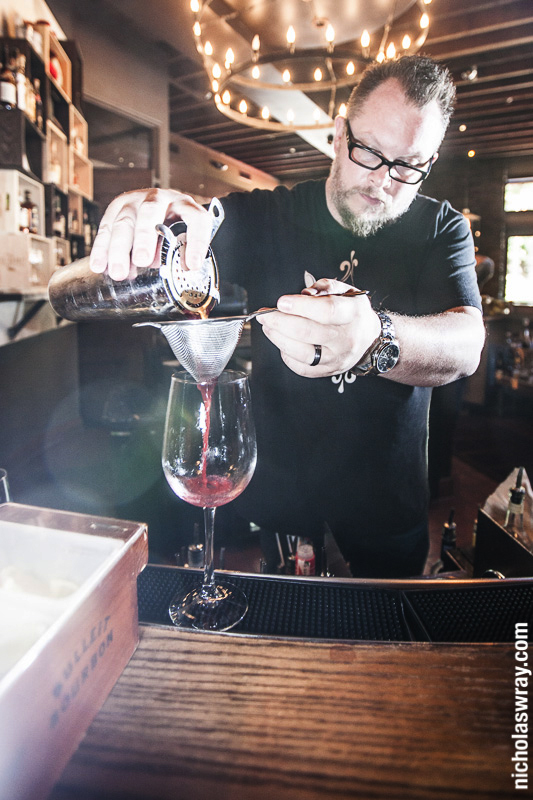
Matthew Nurge
The cocktail menu is an exercise in restraint—you won’t find an encyclopedia-sized treatise of offerings—mixed with cheeky nods to social movements (Harvey Milk punch), historical references (Krakow salt mine) and literature, like the trio of tastings inspired by Chuck Palahniuk’s Fight Club.
“First rule of ‘flight club’ is you don’t talk about it,” Nurge jokes. “The ‘flight club’ is just a simple idea I had to help introduce people to things that maybe they haven’t tried before. It’s an affordable way to try new things or to try things that you already love. The price is ridiculously low. I mean it’s $15 for three tastes and some of the stuff you might get in there is $15 a pour on its own. It’s a fun way to get people to try new stuff; that was my intention, anyway.”
Nurge adds that bartender culture also served as inspiration for one of the libations on the Red Rabbit menu.
“With the ‘buck hunter,’ the style of cocktail is a buck (a class of cocktail that mixes ginger beer or ginger ale with citrus and spirits) and Buck Hunter is a video game that bartenders like to play,” Nurge says. “For whatever reason, I don’t know why [Buck Hunter], somehow became synonymous with bartenders.”
With Midtown Cocktail Week quickly approaching, another reason for the nod to the local liquid culture by the editors of Imbibe, Nurge and the rest of the Red Rabbit contingent are planning a bevy of activities surrounding the fete. From a competition that takes its inspiration from the three-legged races of family reunions and picnics, involving a suit in which two bartenders will literally be attached at the hip, to a pop-up event demonstrating the talents of its drink-slinging employees, the Red Rabbit is gearing up for the alcohol-infused festivities.
“On Sunday, Aug. 25, 2013, we have an event called ‘Best in Show,’” Nurge says. “We’re the last event, and the last event tends to be kind of what we’ve dubbed the closing party. It’s sponsored by Maker’s Mark, and we’re doing a blue ribbon county fair meets pig roast event, so we’ll have carnival games and prizes and a nice, big, fat pig roasting in a box.”
At the core of the Red Rabbit’s bar program is a dedication to quality ingredients, but it’s the partners’ belief in, and commitment to, the ideals surrounding the locavore movement that extends beyond the bar and spills out onto just about every facet of its business model that makes it so distinctive.
“We have a program, the employee incentive program; not that anyone’s made too many dollars from it, but every employee here is actually a part owner,” Nurge explains. “So the employees collectively own five percent [of the business].”
The partners are looking to expand the reach of the hare; Nurge alludes to a possible expansion effort into “The Kay” district and hints at even breaking with a few craft-cocktail traditions when Sinclair suggests the addition of milkshakes to the menu.
“That means we need a blender,” Nurge retorts. “I’ve been on a no blender rule for like eight years. When the whole cocktail resurgence started, everyone who thought they knew something, thought they knew everything, so all of a sudden there were all of these new rules. You know, like no one makes Long Islands, no one carries Jägermeister, no one has a blender, no one carries Red Bull or blue Curaçao.”
“Jäger’s actually great. Bros don’t shoot it anymore,” Sinclair chides. “Fireball took over, so now it’s socially acceptable to drink Jäger.”
After surviving a year in one of the toughest businesses to break through in, as well as a nasty smear campaign by a disgruntled Yelper, the Red Rabbit endeavors to follow in the footsteps of its block mates, notably, Harlow’s and Centro.
“I think we just have a rad concept. We have good product, at what I believe is a good value, and we have good people that work for us,” Nurge says. “That’s a big key to the success of this business.”
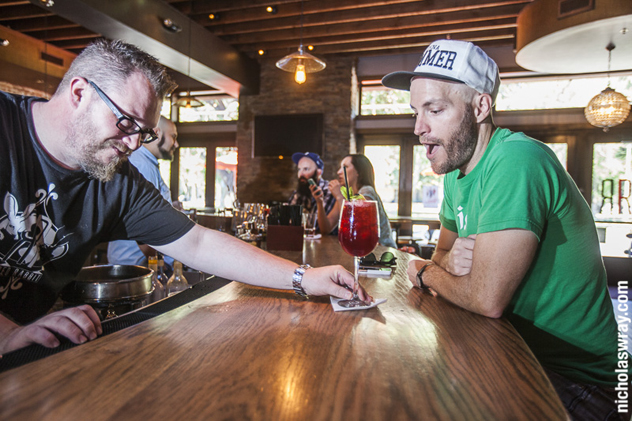
Nurturing the talent in its ranks, while looking to spread the gospel of the Sacramento craft-cocktail scene, Nurge is thrilled by, and, most importantly, supports his employees’ desire to travel the world in search of inspiration—from competitions in Chicago to Puerto Rico.
“I get to meet awesome bartenders and see what they’re doing outside of just our little bubble,” Sinclair says. “It also allows me to spread the good word that is Sacramento and get people really, really excited about coming here and getting excited about seeing this place and bring sort of the appreciation the city deserves, as well as this restaurant.”
The philosophy of craft doctrine also appears to be spilling out into the corporate market—with franchises like Disney and Applebee’s serving up their own craft-inspired cocktails on their respective menus. The movement looks like it’s gaining some serious mainstream credence.
“That’s why T.G.I. Friday’s has craft cocktails on their menu now,” Nurge explains. “It’s everywhere, it’s spreading, but in a good way. It’s a pain in the ass—just ask Carlos over there—to juice for five hours a day, but the end result in the product is irreplaceable.”
Best in Show, The Red Rabbit’s official Midtown Cocktail Week event, will take place from 1 to 4 p.m. on Aug. 25. Admission is free. For a full list of MCW events, go to Midtowncocktailweek.org.
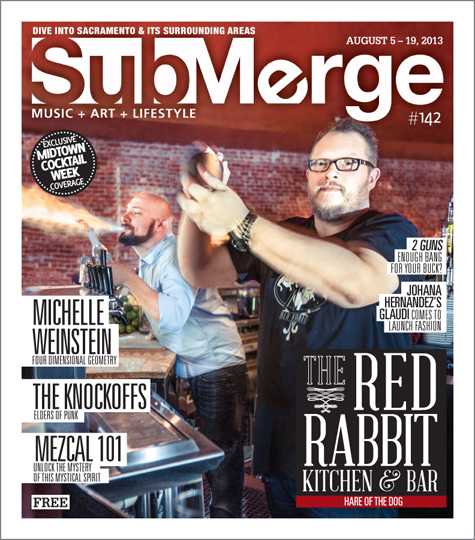

There’s nothing better than day drinking with your pals on a Sunday afternoon, but then again, we’re a bunch of alcoholics. If you’re like us, you’ll take note of DJ Shaun Slaughter’s party at the Red Rabbit on Sunday, Sept. 23, 2012 called “Breezin.” Sip on specialty cocktails like the Sweet Freedom (cognac, lemon Juice, lavender simple syrup, sparkling wine) or the Yah Mo B There (mezcal, lime agave, ginger beer), both just $6, or get endless mimosas for just $9, all while listening to “smooth sailing music by Cap’n Shaun Slaughter.” Think Michael McDonald, Hall and Oates, Steely Dan and tons of other prime selections. Of course you’ll want some sustenance with all that booze in your belly. Lucky for you Red Rabbit has some of the most delicious food in town. It’s a win-win, really. There is no cover charge, party goes from 11 a.m. to 5 p.m. Sailing and beach attire is highly encouraged. Red Rabbit is located at 2718 J Street.
Bunny Business
Lawrence Argent is a professor at the School of Art and Art History at the University of Denver. Though he has only paid one two-day visit to Sacramento, in 2011, he—and his long-eared accomplice—will leave an indelible mark on this city. And though Argent’s sculpture hasn’t even been built yet, it is already causing quite a stir with locals, and the reaction isn’t all that positive.
Argent is one of three selected from a group of over 100 artists to create public art works for the new Sacramento International Airport Terminal B. The airport renovation will cost $1.27 billion; $8 million has been set aside for art. Argent’s installation will serve as the centerpiece of the new terminal—a 56-foot red-orange rabbit leaping into a suitcase with a swirling vortex on top. His piece alone will cost $800,000—a figure that doesn’t sit too well with Sacramentans.
“$800,000 for a fiberglass red rabbit? Come on Sacramento we can do better than that!” wrote one perturbed citizen in response to an article about the sculpture on Sacbee.com. The commenter added, in reference to how a big red rabbit is supposed to represent Sacramento, “Ever see a red rabbit—[anywhere]?”
Others, however, have been more accepting. “Believe it or not [$800,000] for a giant, CUSTOM, red rabbit is pretty reasonable!” retorted another commenter to the same article.
The artist welcomes such debate, however. In fact, it’s the sort of thing he strives for. More than just decorating architecture, Argent wants his public art to inspire conversation and make an impression on those who look upon it.
“I understand the sense of negativity,” says Argent from his studio in Denver. “I think that’s part of the discussion about art; art doesn’t necessarily please everybody. I’m not here to please everybody. I’m just hopefully engaging people in a dialogue that can stimulate them in a different way than what they perhaps may have originally thought.”
Though the rabbit may seem like a lighthearted subject—and it is on some levels—the artist ensures that it is by no means a haphazard decision. The journey Argent took to his choice of subject in this particular piece is similar to his life’s journey. Born in England, Argent received a B.A. in sculpture from the Melbourne Institute of Technology in Australia. He later came stateside to receive an M.F.A. from Rinehart School of Sculpture, in Baltimore, Md. before finally settling in Denver.
“I came here to go to graduate school, and I wasn’t really planning on finishing,” Argent says. His plan was to attend graduate school for a year so that he could come to America “to have people I’d read about in books talk to me about my artwork,” and do so a lot more cheaply than it would have been to move here outright and “actually try to find those people.”

He adds, “Through many routes of possibilities, the journey made me end up here in Denver, Colo., which is actually a very nice city.”
Though he hasn’t spent much time in Sacramento (he’ll be making many more trips as his project progresses), he was instantly impressed with the California capitol.
“I think the energy was very positive there,” Argent says. “I see a change, perhaps, in what’s going on in the dialogue of downtown and the urban environment.”
Argent hopes his piece will contribute to and spur on more dialogue. In fact it already has. Though the big red rabbit element steals the headlines, Argent says the piece actually began with a more mundane idea—the suitcase. Suitcase imagery has appeared once before in Argent’s work. His sculpture Travel Companion—an “old suitcase with a rubber mold of a teddy bear, embedded in concrete and covered in polyester resin”—plays with the idea of travel and its effect on the self.
“I’m interested in our voyage, whether that be physical area that we move through in our life, or the spiritual domain that we walk through,” Argent explains “In that particular piece, it was a sense of possession that we have, that we have comfort in the suitcase, this archived version of something that didn’t quite make it, and that’s what that piece is about.”
Starting with the suitcase for the Sacramento Airport installation put Argent in a precarious position. He needed to connect it to something. He began by considering what goes through a traveler’s mind when he or she exits the plane and heads toward baggage claim.
“When we arrive at baggage claim, what we’ve come through to where we’ve been, that journey that we’ve been on is full of angst, it’s full of anxiety, it’s full of joy. We have all these elements that add up to an amazing component of [when] we start to feel whole again when if perhaps our luggage gets there, which is not always the case,” he says with a laugh. “But when it gets there, there’s this sense of reconciliation of joining yourself with yourself—joining with your stuff.”
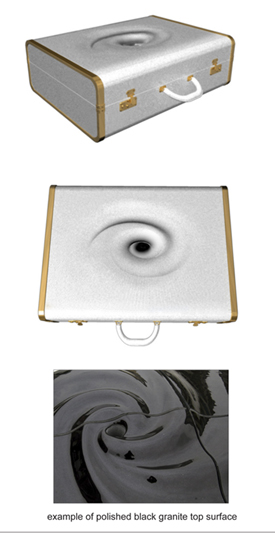
In the end, it was the environment that surrounded the Sacramento Airport that helped lead Argent to his final design. He says that the “green space” outside the facility is unique in that “you can walk outside and you’re in a landscaped environment, and you have the possibility of breathing fresh air—or jet fuel, however you want to look at it,” he jokes. The airports surroundings coupled with the traveler’s anxiety and his/hers desire to deplane and reconnect with his/hers luggage as rapidly as possible pointed toward the image of the rabbit.
“It’s such an animal that I’ve had so much fascination with,” Argent says. “It’s held charge of a powerful symbolism through out civilization—that connection to fables and stories, past and contemporary mythology as well. In it, I sort of sensed a vehicle for an element of paradox that I was interested in.”
To those who are still critical of the piece, Argent hopes that they might change their minds once the installation is actually completed.
“How much can we judge something, by just an image, that’s not even in place yet?” he muses. “When you’ve got this thing leaping at you ” when you’re on your way to baggage claim, you may get a different feeling”¦ That’s a very different experience than what you’re seeing in a rendering.”
Argent is no stranger to public art projects. He gained notoriety for creating a three-story blue bear that peers into the Denver Convention Center. He is currently also working to create a Holocaust memorial for the University of Denver’s Center for Judaic Studies.
